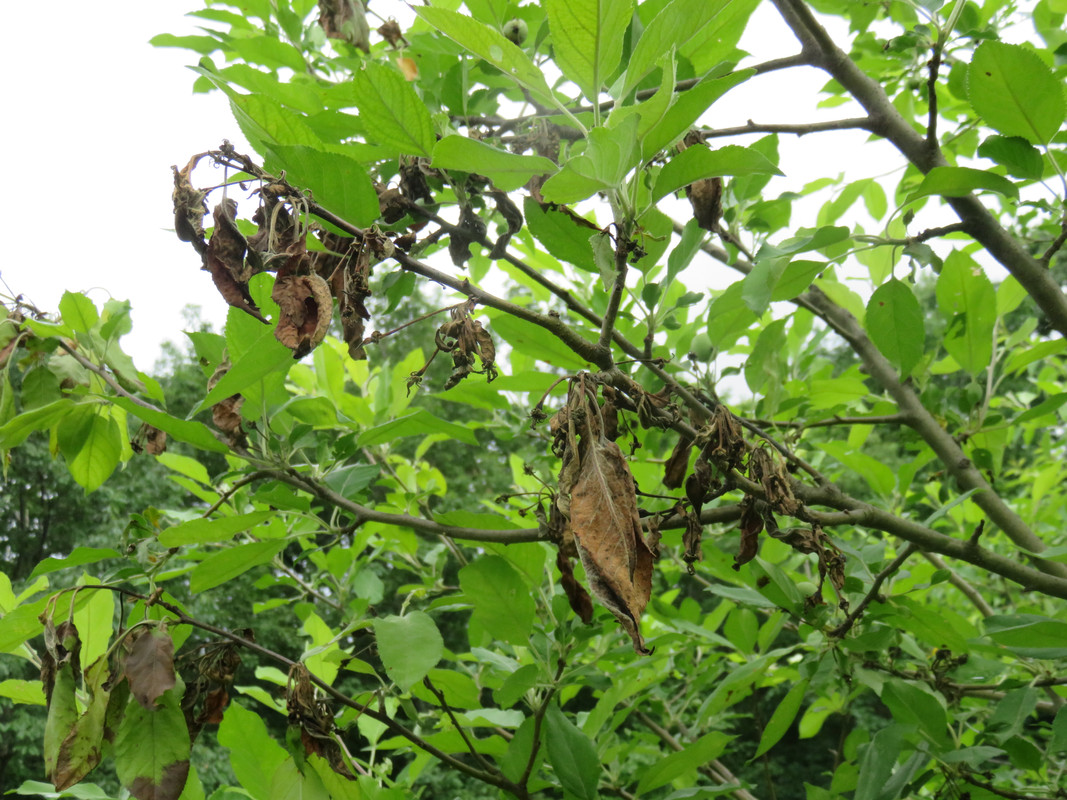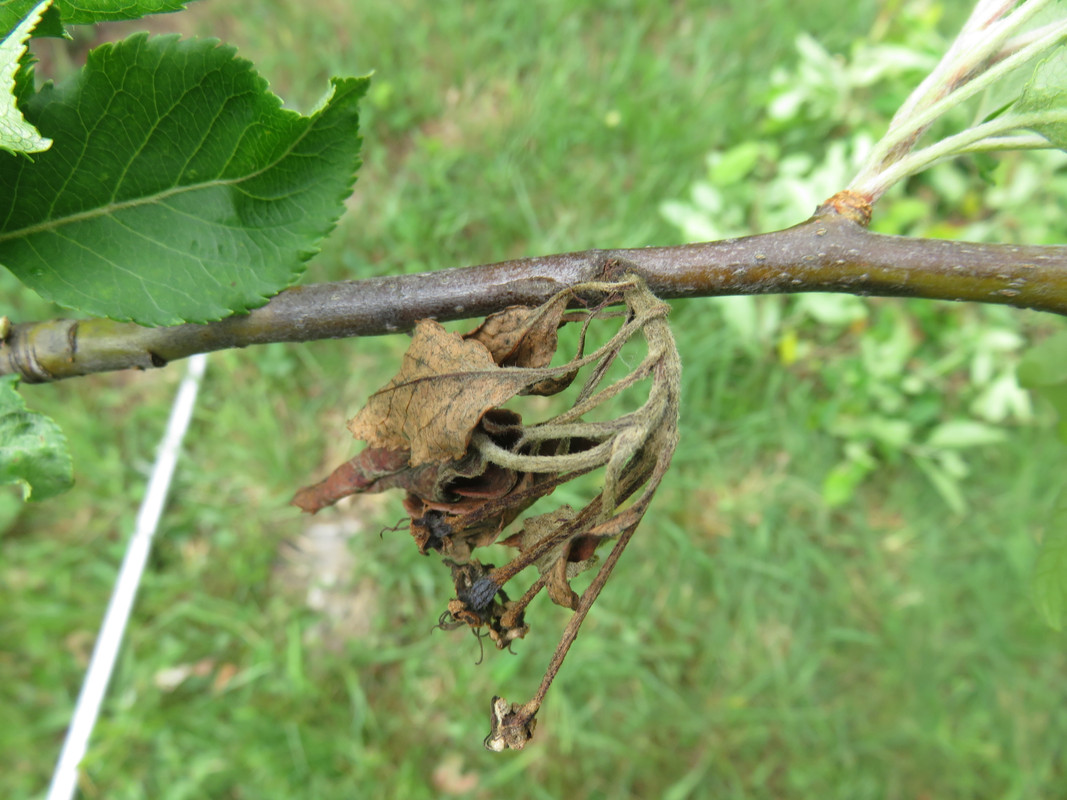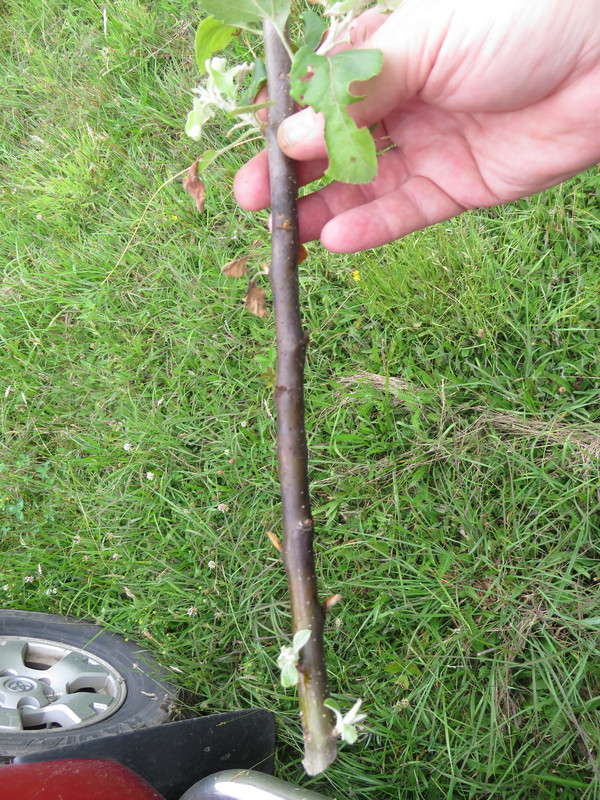Wow, if you are seeing it on Priscilla it must be bad. It is an above average FB resistant apple tree.
The infection time depends a lot on the weather. I think you could see new infections start up to 3 weeks after petal fall, but would be surprised to see new ones after that time. However, the affected limbs will look bad all season and eventually die down to a point, depending on the resistance of the tree. With a highly resistant tree you won't likely see the infections go past this years growth, but in a serious outbreak, I guess it is possible for it to go further. A tree with little resistance can be completely killed.
My neighbor had a tree last year that was close to the worst tree I had ever seen. He didn't do anything to it. He didn't even cut out the affected limbs. The tree lived, and this year is replacing the dead limbs with new growth. I am surprised at how it has recovered, because I seriously thought it was going to die. And, this year FB is not a problem in this area, so not a hint of it on anything.
Most of my apples are highly resistant, and all of my pears are bulletproof. I cut down one tree a few years ago and watching a couple more. I did have a Brushy Mountain LT that had a moderate infection 3 years ago, but that tree has really recovered well. It is my most loaded tree this year. Sorry to hear about your issue. FB is a menace.
Of course, reducing the size of a tree via dwarfing and semi-dwarfing rootstocks has contributed to the problem. The smaller tree has a harder time dealing with FB than a full sized tree, since a larger percentage of it is infected. Also, there is a tendency to flower at a younger age which subjects it to shoot blight at an earlier age. This is documented fact, but not spoken of much in the apple world for various reasons.




